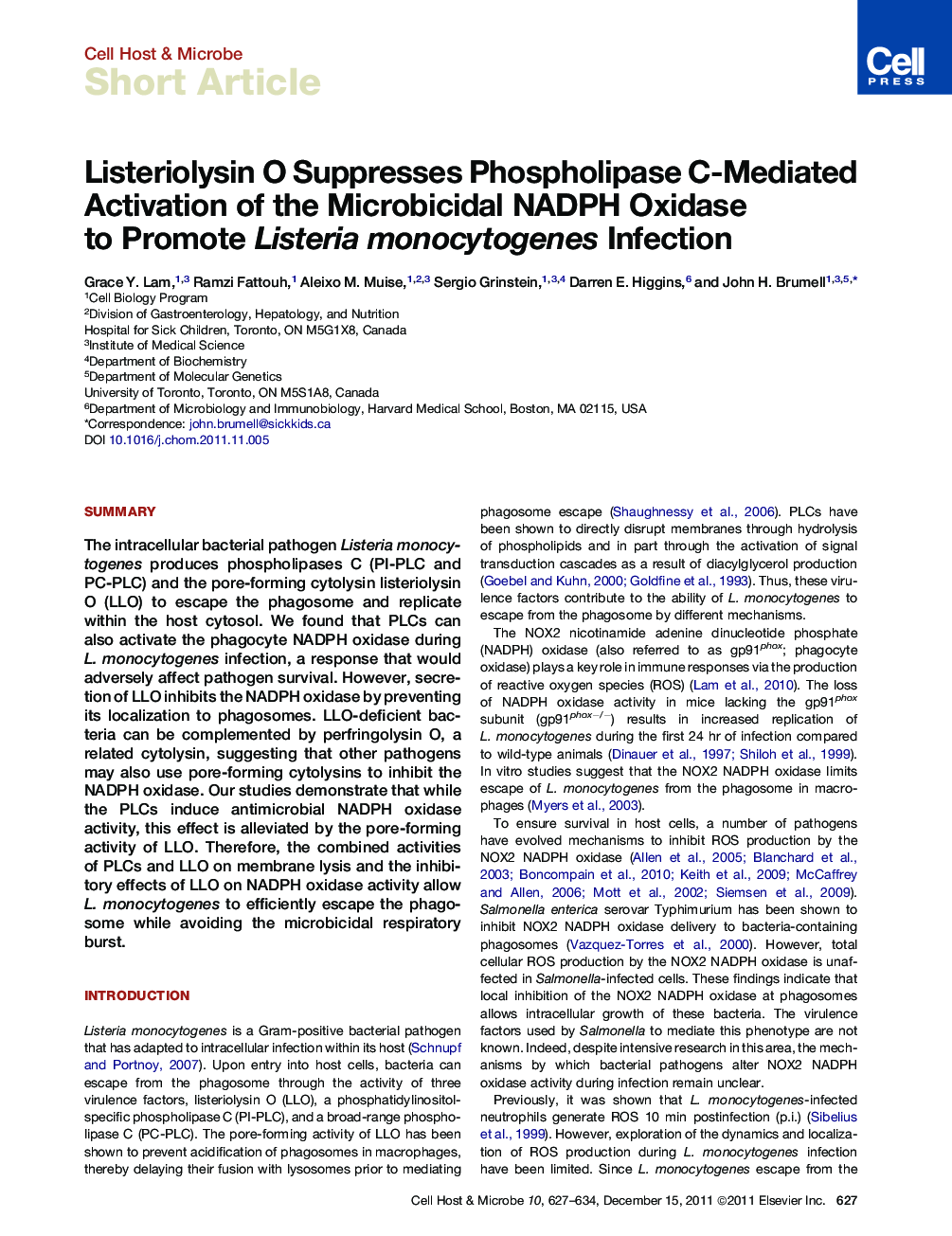| Article ID | Journal | Published Year | Pages | File Type |
|---|---|---|---|---|
| 4361313 | Cell Host & Microbe | 2011 | 8 Pages |
SummaryThe intracellular bacterial pathogen Listeria monocytogenes produces phospholipases C (PI-PLC and PC-PLC) and the pore-forming cytolysin listeriolysin O (LLO) to escape the phagosome and replicate within the host cytosol. We found that PLCs can also activate the phagocyte NADPH oxidase during L. monocytogenes infection, a response that would adversely affect pathogen survival. However, secretion of LLO inhibits the NADPH oxidase by preventing its localization to phagosomes. LLO-deficient bacteria can be complemented by perfringolysin O, a related cytolysin, suggesting that other pathogens may also use pore-forming cytolysins to inhibit the NADPH oxidase. Our studies demonstrate that while the PLCs induce antimicrobial NADPH oxidase activity, this effect is alleviated by the pore-forming activity of LLO. Therefore, the combined activities of PLCs and LLO on membrane lysis and the inhibitory effects of LLO on NADPH oxidase activity allow L. monocytogenes to efficiently escape the phagosome while avoiding the microbicidal respiratory burst.
► L. monocytogenes PLCs activate and LLO inhibits ROS production by NOX2 NADPH oxidase ► LLO-deficient bacteria survive in NOX2 NADPH oxidase-deficient macrophages and mice ► LLO inhibits NOX2 NADPH oxidase assembly at the phagosome ► LLO-related pore-forming cytolysin, PFO, can complement LLO deficiency
